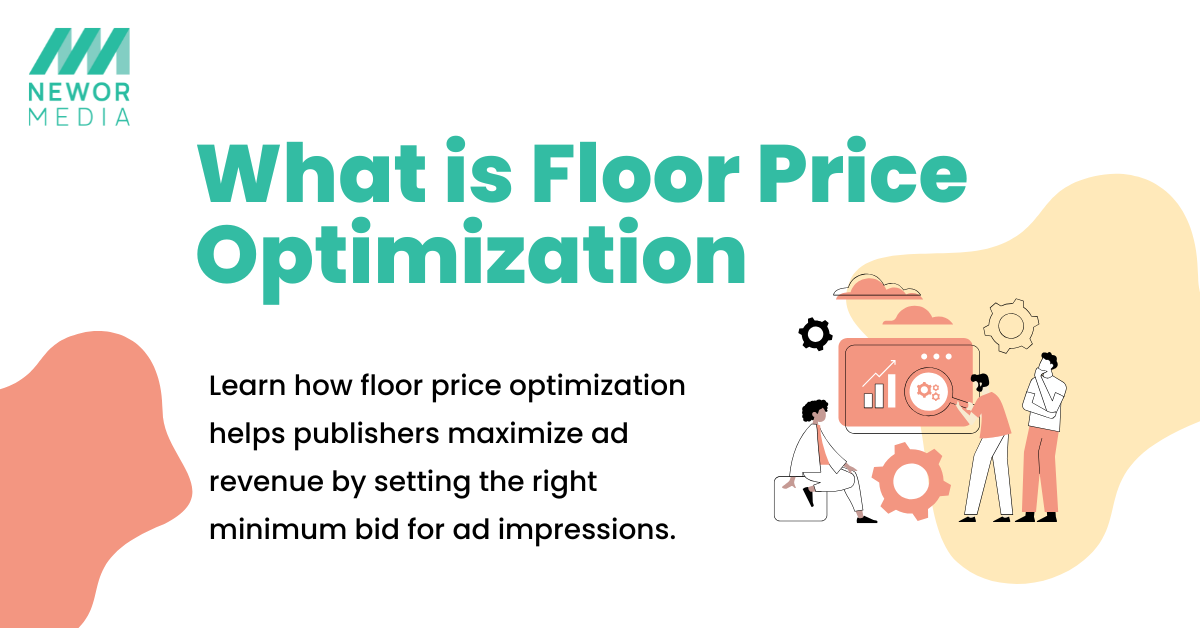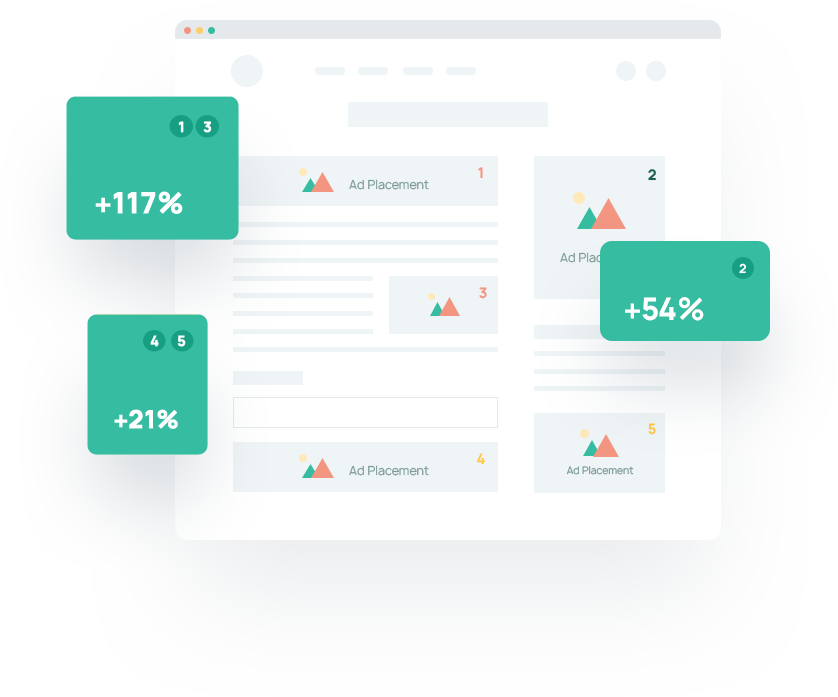Maximizing your ad revenue from your ad inventory is always a priority when it comes to digital advertising. Publishers are constantly looking at ways to increase website revenue without ruining the user experience and that is where the idea of floor price optimization comes in.
What exactly is floor price optimization? If you have worked with ad networks or exchanges, you would already be aware of the the term “floor price”. Understanding how to use it effectively makes a significant difference to your revenue. In this blog, we’ll look at what a floor price is, how floor price optimization works, and why it matters to publishers looking to take their ad strategy to the next level.
What is a Floor Price?
Essentially, a floor price is the minimum price a publisher is willing to accept for an ad impression. It basically acts as a threshold. If advertisers aren’t paying that price or exceed that price, then the platform will not sell the impression. It is nothing but the starting point in negotiations. Setting the right floor price ensures that you don’t undersell your inventory and helps maintain the value of your ad space.
For instance, if you set a floor price of $1 for an ad impression, it means you’re not willing to sell that ad space for anything less than $1. If a buyer’s bid is below that price, the impression goes unsold. If the bid meets or exceeds the floor price, the impression is sold, and the buyer’s ad is displayed.
Why Should You Set a Floor Price?
Your potential revenue will be safeguarded by establishing a floor price. It will set a baseline and ensure that your inventory of ads is not being undersold. It also assists you in taking into consideration elements that affect the value of your ad space, such as user interaction, ad placement, and audience quality.
In programmatic advertising, where real-time auctions sell and buy ads programmatically, there is a risk of selling inventory too cheaply if you don’t have a floor price. Your impressions might be sold for much less than you believe they are worth if there is no floor price, leaving money on the table.
The Role of Floor Price Optimization
Now that we are aware of what a floor pricing is, let’s examine how to optimize it. In essence, it is the process of optimizing floor prices to gain a competitive advantage and maximum income.
Strategically modifying floor prices according to demand, audience quality, time of day, and seasonality is known as floor price optimization. Finding a balance between appropriately priced impressions and maintaining their competitiveness to draw bids is the aim.
In summary, floor price optimization is the process of continuously adjusting your rates to optimize the value of your inventory of ads. Floor prices must be watched to make sure they are neither too low (which would reduce your potential revenue) nor too high (which could lead to unsold inventory).
How Does Floor Price Optimization Work?
Optimizing floor prices requires a lot of factors. The following crucial elements can help you determine your ideal floor prices:
1. Quality of Audience
Your floor pricing may be impacted by the quality of your audience. Inventory that targets valuable, active users will fetch a higher price from ad buyers. For instance, your inventory will be worth more if your audience is made up of highly engaged users or members of a particular demographic.
To ensure that advertisers still find value in buying your inventory, you may need to modify your floor pricing if your audience is less specialized or has a lower engagement rate.
2. Ad Placement and Context
Ad value can be greatly impacted by ad location. High-priced ads are those that show up in prime locations or above the fold, which is the area of the page that is seen without scrolling. Compared to ads in less interesting locations, such as sidebar banners, these ads typically fetch greater bids.
By modifying your floor prices according to the ad’s location and context, floor price optimization accounts for these variables.
3. Real-Time Demand and Auction Data
Real-time demand and floor pricing optimization are closely related. Depending on the level of demand for their inventory at any given time, publishers can modify floor prices. You can raise your floor price if there is fierce competition for a particular ad slot (during peak hours or right before a big event, for instance).
In order to guarantee that your impressions are sold rather than going unsold, you might need to reduce your floor price if demand is weak. In order to make well-informed judgments regarding floor pricing adjustments, many publishers use demand-side platforms (DSPs) and header bidding systems to obtain real-time insights into how much advertisers are ready to pay for inventory.
4. Seasonality and Time of Day
Seasonality is another important factor that influences floor pricing optimization. Advertisers tend to increase their ad budgets around specific periods of the year, such as holidays, shopping seasons, or the end of the quarter. In order to take advantage of the higher demand during these peak times, your floor pricing might need to be higher.
It also depends on the time of day. Ad impressions may be worth less during off-peak hours when traffic is lower and more during the day when user engagement is higher. Based on this hourly fluctuation, publishers ought to modify their floor rates.
5. Programmatic Auctions and Bidding Strategies
Floor pricing optimization heavily relies on real-time bidding (RTB) auctions and programmatic advertising. Publishers frequently collaborate with several networks or ad exchanges, each of which has a unique bidding mechanism. You may make sure that your inventory is being sold for the highest potential price without turning away advertisers by using floor price optimization techniques in these auctions.
Dynamic floor pricing methods, in which the floor price is automatically modified in response to real-time auction data, are another option available to publishers. Because technology eliminates the need for manual intervention and guarantees that inventory is sold at a competitive price, this kind of optimization may be more effective.
Why is Floor Price Optimization Important?
When done right, floor price optimization helps publishers achieve the following benefits:
1. Maximized Revenue
The most obvious benefit of floor price optimization is the potential to increase revenue. By setting the right floor prices based on audience data, ad placement, demand, and seasonality, publishers can ensure that their inventory is always sold at the highest price possible without leaving money on the table.
2. Increased Efficiency
Floor price optimization can make the process of selling ad inventory more efficient by ensuring that ad impressions are sold quickly and at competitive prices. With the help of real-time data, you can make immediate adjustments to your floor prices, preventing unsold inventory from sitting on your site for too long.
3. Better Advertiser Relationships
By setting floor prices that ensure your inventory is valuable but not overpriced, you create a better environment for advertisers to place bids. This helps establish trust and long-term relationships, which can lead to more consistent revenue over time.
4. Better Control Over Ad Revenue
Optimizing your floor prices gives you more control over your ad revenue. Instead of relying on ad networks or exchanges to determine the price of your inventory, you can set your own prices and adjust them as needed based on market conditions. This level of control helps you get the best value from your ad space.
Key Takeaways
In the competitive world of digital advertising, floor price optimization is a powerful strategy for publishers looking to maximize their ad revenue. By setting the right floor prices and adjusting them based on factors like audience quality, ad placement, and demand, publishers can ensure they’re selling their inventory at the best possible price without leaving money on the table.
Floor price optimization is all about finding the sweet spot between undervaluing your ad space and pricing it too high, which could result in unsold inventory. With the right tools and strategies in place, floor price optimization helps publishers sell their impressions more efficiently while maximizing their earnings.
By staying on top of these optimization practices, you’ll be in a great position to increase your ad revenue while maintaining strong relationships with advertisers.

